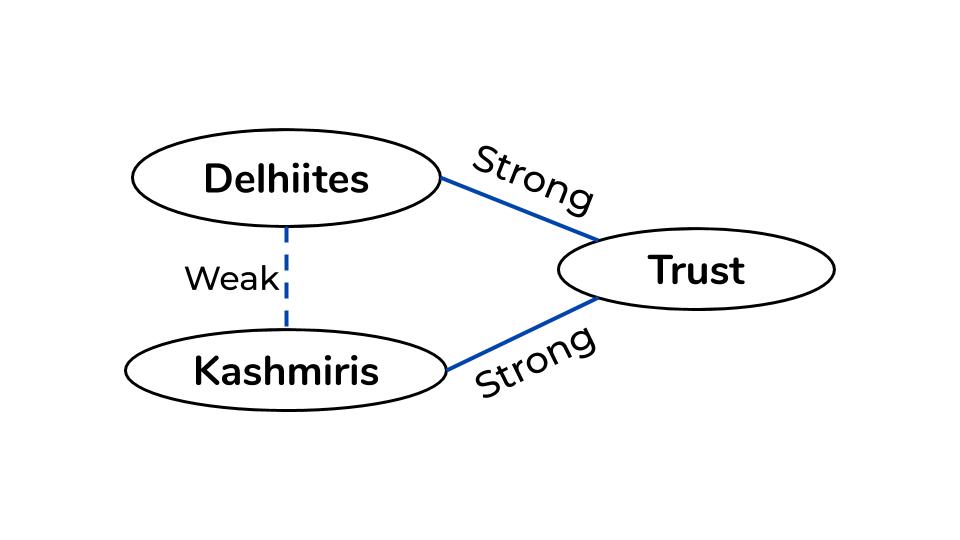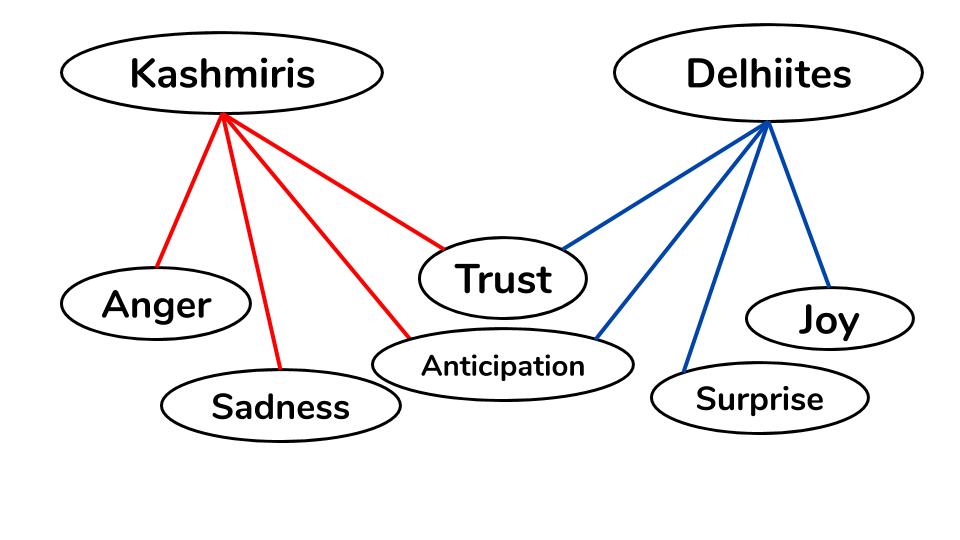Emotions play an important role in the way people behave, and can be affected by social or physical factors. Therefore, it is very likely that people living in the same region express varying emotions from the people living in a different region. A huge amount of data suggests that people living in “politically disturbed regions” may be subject to mental distress.
A research done at Central University, New Delhi, analyzes emotions shared on social media platforms by netizens in conflicting versus non-conflicting areas. Since most people in India use Facebook for their social activities, researchers chose this platform to collect and compare data from users living in Kashmir (a conflicting region) and Delhi (non-conflicting region). Kashmir has been recorded as a conflicting area of India, whereas Delhi has been reported as the third happiest city in India.
The researchers used Plutchik’s eight basic emotions, namely fear, anger, sadness, joy, surprise, disgust, trust and anticipation, to determine the emotional state of a user. The emotions “fear, anger, sadness and disgust” are associated with negative sentiments, whereas “joy, trust and anticipation” fall under positive sentiments. The surprise category holds the words of mixed sentiments, such as shocking and amazing.
The researchers evaluated the data to study the difference in emotions expressed by the users of the two regions. It can be observed from the scatter plot shown below that the negative emotion categories like fear, anger, and sadness contain more Kashmiri users than the Delhiites, whereas joy (a positive emotion) category contains more Delhiites. However, positive emotions such as trust and anticipation are experienced by users from both regions.

In the plot, we see that trust and anticipation are expressed by both Kashmiris and Delhiites. If we were to connect the emotion “trust” to Kashmiris and to Delhiites, we will notice that both netizens have a strong connection with the emotion. Therefore, by Strong Triadic Closure property, we can conclude that Kashmiris and Delhiites have at least a weak edge between them. This can be justified because not many people from Delhi know residents of Kashmir. Therefore, it is safe to conclude that citizens of both Delhi and Kashmir won’t feel empathy towards each other.

Furthermore, from the scatter plot, we see that users from Kashmir have a strong connection to negative sentiments, and users from Delhi have a stronger connection to positive sentiments. We can, therefore, cluster citizens of Kashmir and citizens of Delhi together because of the emotional connection they have between them.

This isn’t surprising because the users of the same region should experience the same emotions, in general. Since Kashmir is under siege for years, and the residents of Kashmir are regularly subjected to direct or indirect violence such as bloodshed, death, deprivation of good quality life and imposition of restrictions, they experience negative sentiments like anger and sadness. Delhiites, however, experience positive sentiments like joy. Both groups of netizens are hopeful, but in different ways. Kashmiris hope that the siege ends soon, whereas Delhiites are hopeful about their own future, rather than the city’s future.
The analysis done using the data collected, researchers found that the psychology of the citizens has been abysmally affected by the violence in the conflicting regions. They found that users in Kashmir fall under 4 negative emotion categories: fear, anger, sadness and disgust, whereas positive emotions like joy were found more in the posts made by users from Delhi.
Source: https://www.sciencedirect.com/science/article/abs/pii/S0736585318308402#f0010
One reply on “Sentimental Analysis of Facebook users from Kashmir versus Delhi”
It’s fascinating to see how emotions, which are quite difficult to quantify, have been mapped to posts made by different people in two given regions. I can imagine the amount of work this study must have taken. It was an interesting read!